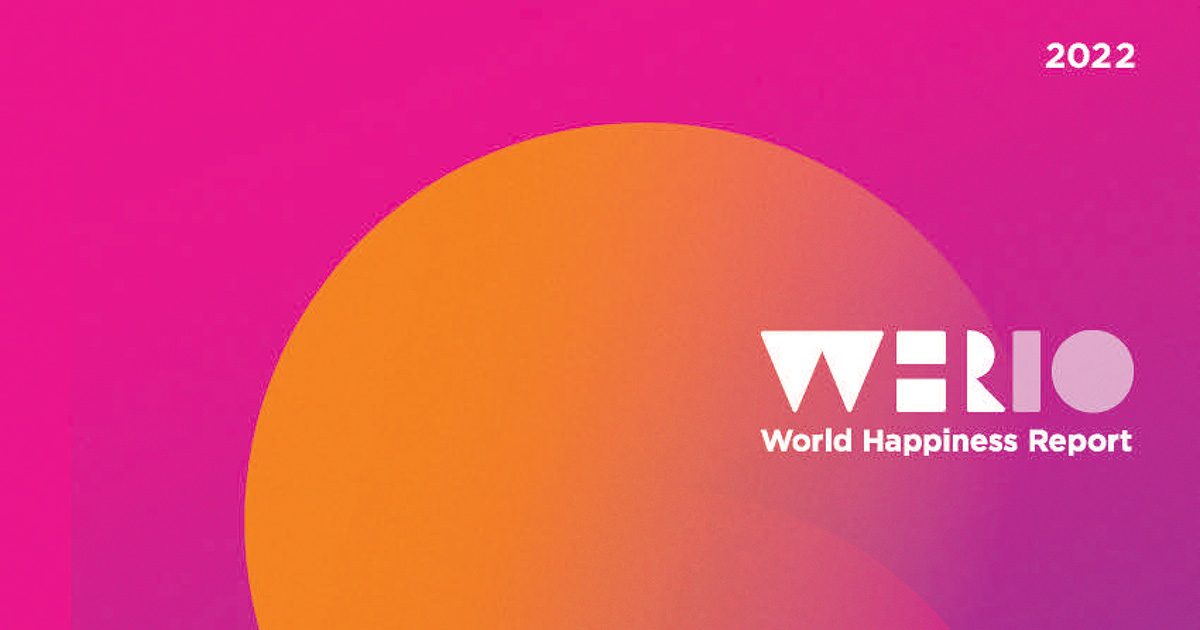
Mar 31, 2022 World Happiness Report 2022
The first World Happiness Report (WHR) was issued in 2012. Therefore, this year (2022) is the tenth anniversary of that event. The WHR founders’ statements in the opening chapter of WHR 2022 assert; 1. The true measure of progress is the happiness of people. 2. We can now reliably measure such happiness, and 3. We have a considerable understanding of how to increase happiness. Given such knowledge, the report notes that “it is now possible for policy-makers to make people’s happiness the goal of their policies.”
The latest (2022) WHR was released on March 22nd, and it again finds that the Nordic countries (Finland, Denmark, and Iceland) are at the top of the Happiness table – Sweden and Norway are at numbers 7 and 8. (The Nordic countries also head up the OECD Better Life Index). The Nordic countries lead the national happiness table (and the OECD Better Life Index), in part, due to the high levels of public trust people have in their national institutions. The benefits of high levels of public trust are also significant for those experiencing adversity. Communities with high levels of trust are much more resilient in the face of a wide range of crises and disasters. For example, countries and regions with high levels of public trust or social capital have been more successful in reducing rates of Covid infection and pandemic-related deaths. The 2022 WHR also reports a striking worldwide increase in prosocial behaviors, including benevolence towards strangers and donations to charitable organizations.
Among the variables studied by the authors and contributors to the 2022 World Happiness Report include the growth in per capita GDP and healthy life expectancies. Other variables studied were declines in the perceived levels of corruption and relatively constant overall levels of social support. Donations and volunteering to help others (e.g., the extraordinary support provided to Ukrainian refugees by Ukraine’s neighbors) rose by almost 25% in 2021 compared to pre-pandemic levels. The WHR reports, “this outpouring of kindness provides grounds for hope and optimism in a world needing more of both.”
Chapter 4 by Hannah Metzler and her colleagues in the 2022 WHR reports on an analysis of social media (e.g., Twitter language) to track positive and negative emotions in society. For example, anxiety-related terms increased sharply on Twitter during the early stages of the pandemic. The upsurge in anxiety was steeper in countries with more significant increases in Covid cases. Sadness terms also increased while anger terms declined in frequency.
Well-Being and Incorporation into Public Policy
The 2022 WHR also tracks trends in the use of well-being measures in public policy (the Chapter by Christopher Barrington-Leigh of McGill University, Montreal, Canada). For example, encouraged by the OECD, nearly all its member countries now measure the happiness of their people via an annual Better Life Index. At the same time, the EU also publishes a “Happiness Index.” The Nordic Council of Ministers has classified well-being initiatives according to whether or not a country uses well-being measures to monitor happiness trends or guide the development and implementation of actual public policy. The Council regarded countries looking to develop a “well-being economy” as beginning to move beyond the use of GDP as a measure of progress. Bhutan, the United Kingdom, and New Zealand were the countries currently using well-being metrics most broadly, i.e., subjective well-being, to measure progress, set priorities, and guide public policy.
There are now also attempts to monetize the happiness scale. WHR 2022 reports that a one-point change in the life-satisfaction scale is equivalent to around £13,000 (2019 values) in extra income (with a range from £10,000 to £16,000). In other words, an average person would spend approximately £13,000 to increase their life satisfaction by one point on a ten-point scale.
Subjective well-being is now beginning to gain real traction as a possible alternative to GDP to measure national progress. However, there are still challenges in developing a reliable public indicator of subjective well-being. For example, the 2022 WHR studied values typically associated with lifestyles associated with harmony, peace, and calm to determine how these values affected subjective well-being. The 2022 WHR reports that peacefulness tracks closely with happiness and subjective well-being across countries. Given the option, most people appear to opt for peacefulness over the highs and lows of more eventful lives.
The WHR’s institutional sponsors include a consortium of academic centers (the Center for Sustainable Development at Columbia University, the Wellbeing Research Centre at Oxford University, the Vancouver School of Economics at the University of British Columbia, the Centre for Economic Performance at the London School of Economics, and the Korea Development Institute School of Public Policy and Management. Gallup Corporation is also a key contributor to the report providing data on life evaluations from its annual Gallup World Poll. The Gallup data provide the basis for the world happiness rankings.


